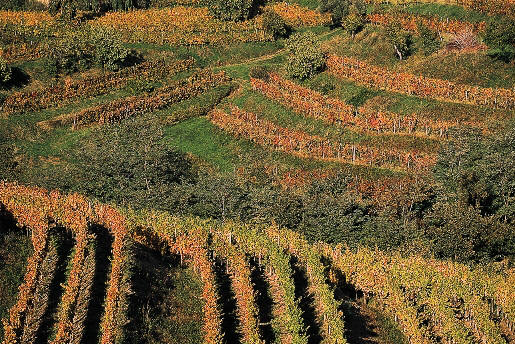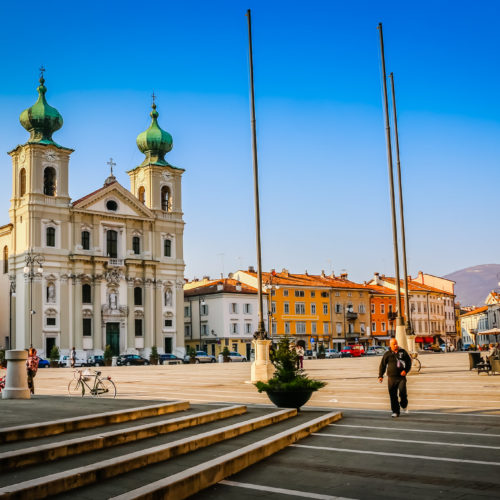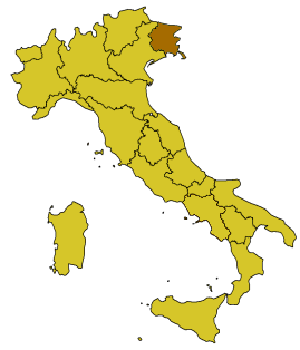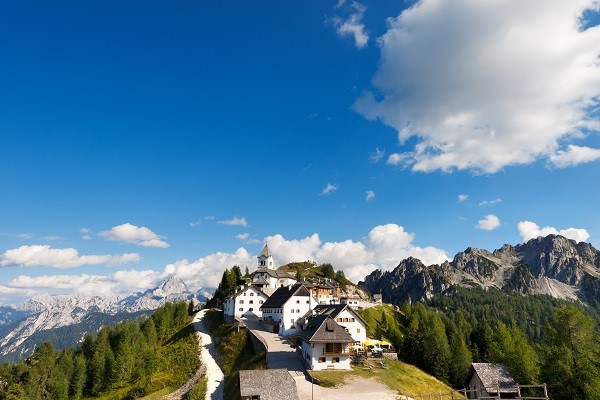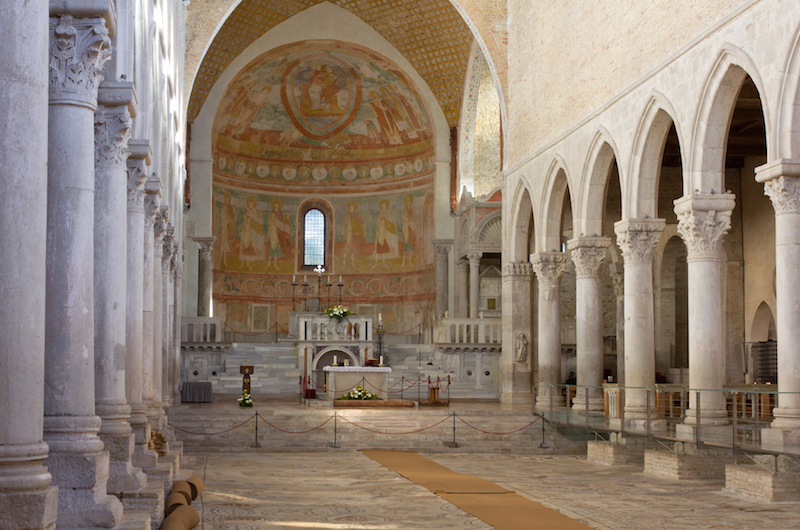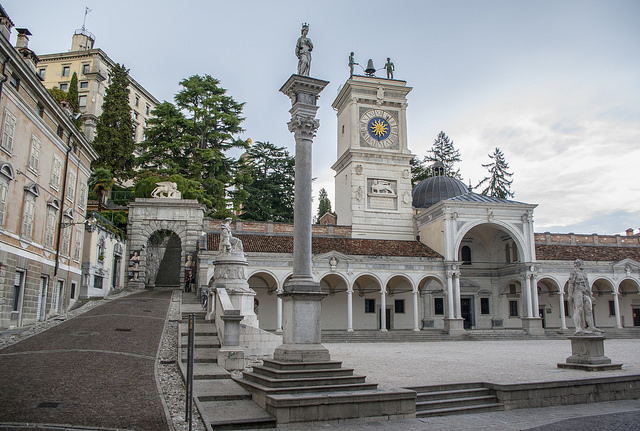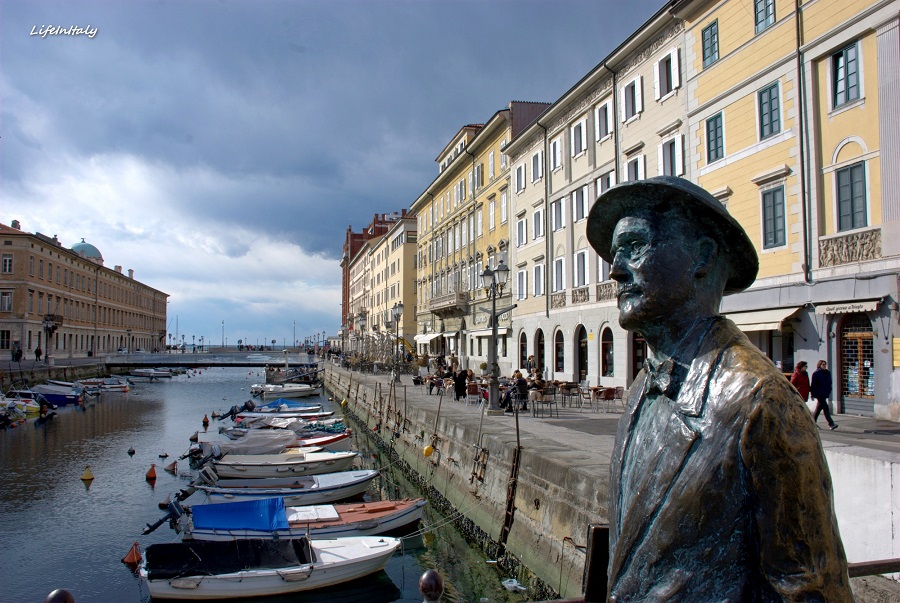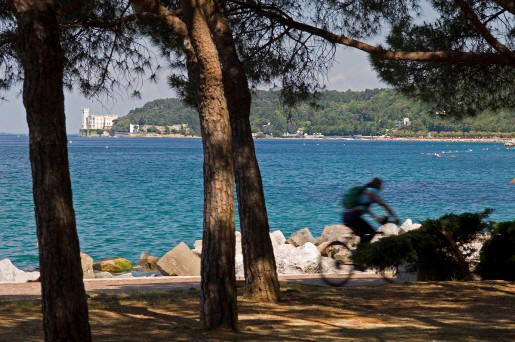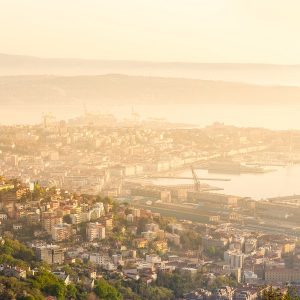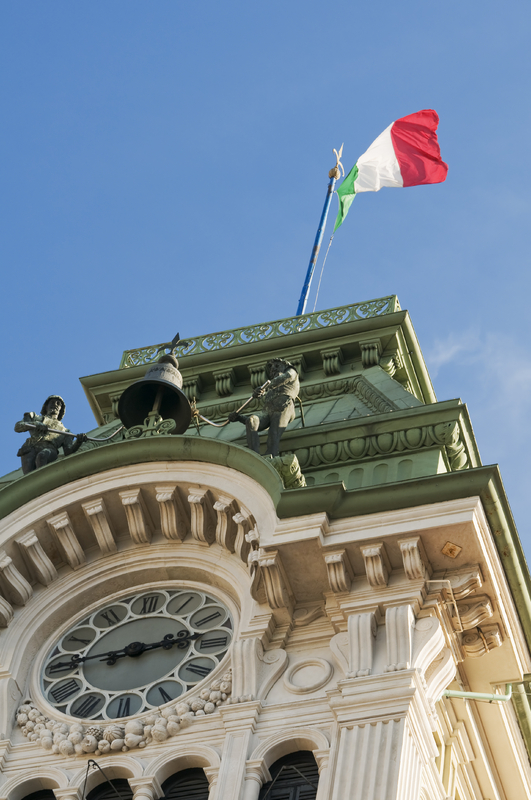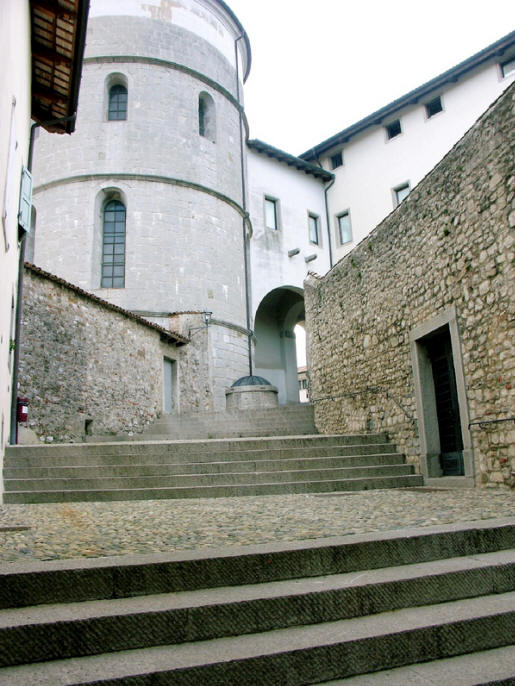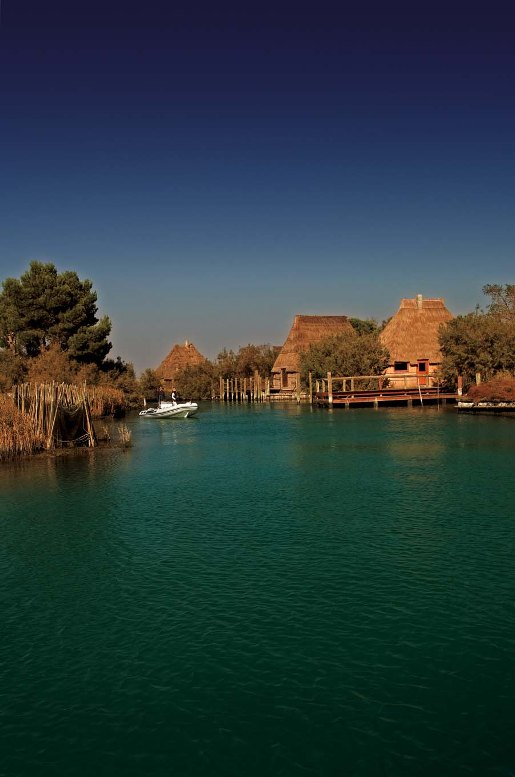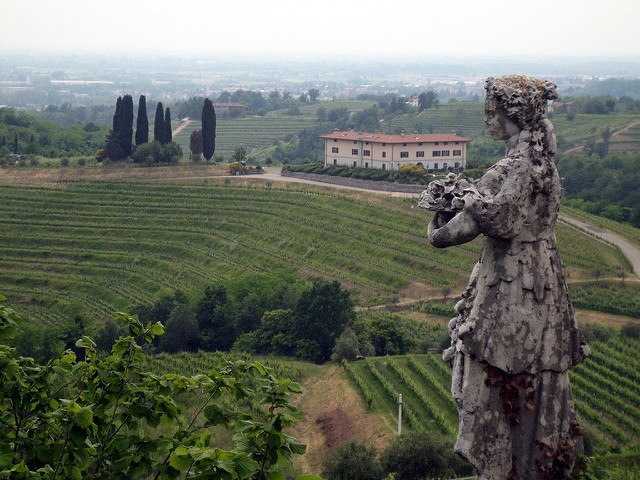
Cuisine and the land, the land and cuisine: a fundamental link generating a kaleidoscope of tastes. The most noted ambassadors of the region, San Daniele ham and the wines of the Friuli Venezia Giulia vineyards, introduce the dishes and products of the sea, mountains, and hills. Are you ready to discover the many types of wine and food in Friuli Venezia Giulia?
Historic events, landscapes, languages, and dialects. The many diversities enriching Friuli Venezia Giulia have also rubbed off on its varied traditions of wines and foods: dishes, flavors, aromas, and culinary rites are bound indissolubly to the land and recount its history through a range of flavors.
Wine and food in Friuli Venezia Giulia
There is the now-legendary San Daniele ham, the pride and joy of regional products and popular internationally, but there is also the smoked ham of Sauris and that of Cormons, a product for a lucky few.
In the Friuli Venezia Giulia vineyards, a garden-cum-vineyard in which the finest whites of Europe, perhaps of the world, are produced every year, the wineries will open their doors to you to enable you to discover the fabulous nectars and enjoy the renowned hospitality of these “doc” producers.
Thanks to the vast range of fish, succulent crustaceans, and seafood on offer, it has to be said that the cuisine on the Adriatic coast offers numberless fine dishes, including Grado’s boreto, the scampi in busera of Istrian tradition, and the sardoni and ribaltavapori of the Gulf of Trieste.
Among the cheeses, you will appreciate the Montasio (fresh, semi-seasoned, and seasoned), which is gaining in popularity throughout Italy, the smoked ricotta with its Alpine dairy taste, and a host of little-known but highly appreciated cheeses, such as the “formadi frant”.
In Carnia, the traditionally poor man’s cuisine is given added flavor with woodland mushrooms and herbs (formerly these were used only in omelets, but they now appear throughout the flavourful menu). Likewise in the valleys north of Pordenone, in which are also produced the brusaola and pitina, delicious meat-based dishes.
And while frico, with muset e brovade remain emblematic of Friuli’s cooking, we should not forget the cjarsons of Carnia and the gnocchi di susine of the Gorizia area, bearing witness to the influence of Central Europe. Returning to other typical local products, we find trout (smoked, especially), honey, various forms of grappa, and oils.
Between the mountains and the sea: a land to be discovered, a kaleidoscope of unique flavors… the flavors of a unique people. Let’s see more about wine and food in Friuli Venezia Giulia!
San Daniele: The King of Flavors
Carefully selected fresh Italian pork haunches, sea salt, and the air of San Daniele: just these three ingredients, plus at least 12 months of tender care in the thirty-odd establishments set in the landscape around the town, make up the recipe for a cured ham that has become a legend.
One of the standard-bearers of Friuli Venezia Giulia’s wines and foods, San Daniele ham, summarises in one the whole concept of the bond between characteristic products and the land, a unique land that provides products that are equally unique.
The hill of San Daniele del Friuli Venezia Giulia is located just a short way from the first heights of the foothills of the Alps, lapped at their feet by the Tagliamento river. Here, cold air arriving from the north and warm air from the Adriatic meet and mix along the river, which acts as a conductor and natural “air conditioner”.
As a result, there is a gentle but constant breeze with just the right amount of humidity: ideal, “textbook” conditions for curing meat.
The ham (the addition of “cured” is superfluous) is, together with the air of San Daniele, the absolute protagonist of an event founded over 20 years ago, held in the last weekend of June: “Aria di festa”, four days – from Friday to Monday – during which hundreds of thousands of people fill the streets and squares of San Daniele, and the establishments that open their doors wide for the occasion, to taste the “Sandaniele” in the finest possible conditions: carefully sliced and instantly eaten, with just the air of San Daniele to add flavor: a party atmosphere between the mountains and the sea.
The Castles and Ham Itinerary
An incredible itinerary for those who love wandering through history and fine flavors. An itinerary winding through the Colli Moreneci, amongst the castles and fortresses that have helped write the history of Friuli Venezia Giulia, passing through San Daniele, where one cannot but enjoy a tasting of this fine ham.
A Vineyard called Friuli Venezia Giulia
A region that is a sort of promised land for oenophiles. Eight ‘doc’ (guaranteed vintage) districts. 1,700 wineries producing 100 million bottles a year. Robust reds and some of the best whites in the world. And two further jewels: Ramandolo and Picolit.
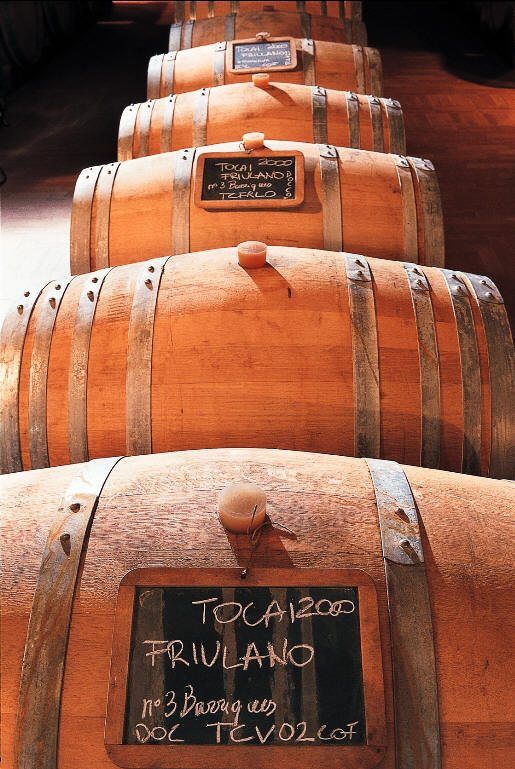
Friuli Venezia Giulia: eight ‘doc’ or guaranteed vintage districts. Three of these are in the hills (Colli Orientali del Friuli, Collio, Carso), while the rest stretch as far as the sea: Isonzo, Aquileia, Annia, Latisana, Grave. All summarised in one simple definition stretching beyond the border: Vigneto Friuli Venezia Giulia.
A single, large vineyard extending from the rows clinging to the slopes of Monte Bernardia at Ramandolo to those planted with infinite effort and love amid the stone fields of the Carso, and from those by the banks of the Tagliamento at Spilimbergo down to the Malvasia vines reflected in the lagoon of Marano. An area of 20,000 hectares, with 24,000 people dedicated to vines and wines; a district in which 1,700 wineries produce 100 million bottles annually of splendid wine, among which some whites considered of the best, if not the best in the world.
A district that is a sort of promised land for oenophiles, who can here discover the appeal of local vines: Vitovska and Terrano in the Carso, Tocai Friulano and Ribolla Gialla in the hills of Gorizia and Cividale, and Refosco in Aquileia especially (although it is to be found almost everywhere).
Some of the leading whites are the Pinot, Chardonnay, and Sauvignon, first planted here towards the end of the 19th century by aristocratic families of French origin, while the local reds are gaining increasing popularity: Schiopettino, Pignolo, and Tazzelenghe.
And as the cherry on the cake, two little jewels, the only wines (so far) to have been granted DOCG status (denominazione d’origine controllata e garantita, constituting the best in terms of guarantee) in the region: Ramandolo and Picolit. Two dessert wines serve very well as meditative wines too. Or to accompany a choice dish – a growing trend – from the regional cuisine, such as the formadi frant or foie gras.
The Itinerary of Wines and Flavors
Friuli Venezia Giulia is a maze of roads and itineraries associated with wine and the local produce accompanying it: from the eastern hills to the country around Aquileia and down to the plains and lagoons, passing through the Collio, Carso, and Isontino, and concluding in the broad Grave district. The possibilities for discovering the region through its wines and gastronomy are truly infinite. And we shall continue the guide for wine and food in Friuli Venezia Giulia!
The Taste of the Sea – wine and food in Friuli Venezia Giulia
Friuli Venezia Giulia, from Trieste to Grado and Lignano, but also in the districts behind the coast, is dotted with restaurants in which to enjoy fish and seafood in every way imaginable. Not just the classics but also dishes with curious names, including sardoni, ribaltavapori, sarde in savor and boreto alla graisana.
In Friuli Venezia Giulia, the sea plays an important role in the kitchen: the coast is dotted with a host of restaurants for all pockets, offering fish and seafood in any number of ways. Mediterranean blue fish holds sway in Trieste: fried or breaded sardoni (which is the local name for anchovies), ribaltavapori (a classic dish of deep-fried whitebait), sarde in savor (fried anchovies marinated in vinegar and onion) are some of the most typical recipes. But in Trieste, and in numerous other localities throughout the region, you can also enjoy sea bass, gilthead, tuna, mussels, clams, cuttlefish, and plenty of other freshly-fished products from the Adriatic.
A visit to Grado is best enjoyed with a taste of the local boreto alla graisana, which is neither a broth nor a soup, but a dish invented by the lagoon’s fishermen, unique for the simplicity of its ingredients and preparation. In Grado, at Marano Lagunare and near Lignano, there are a number of traditional fish farms producing pesce di valle (see below), which daily supply the tables of the whole region.
Vallicoltura
Ever since the lagoons of Grado and Marano were first settled by fishermen, special cages have been built in which to raise fish in a manner attuned with the lagoon’s ecosystem.
The Thrill of the Table
In a region in which a host of culinary influences jostle alongside each other, the Friulian tradition is represented by frico, muset e brovade, while the mountain district expresses itself through herbs, fruit, and mushrooms. And in the confectioner’s shops of Gorizia and Trieste, there is the scent of Central Europe.
Friuli Venezia Giulia is a crossroads of many culinary influences. We have clear evidence of this in the paste e fagioli (pasta and bean) soup present throughout Italy, which in Friuli Venezia Giulia becomes orzo e fagioli (barley and bean), in Trieste jota (beans and sauerkraut) and in Gorizia fagioli e brovada (beans and pickled turnips).
Ours is a region in which the wine and food specialties have developed and defined themselves in their diversity: from the cuisine of the mountains, perfumed with herbs, fruit, and mushrooms of all sorts, which finds its maximum expression in Carnia through the delicious cjalsons (stuffed ravioli with a sweetish aftertaste), to the traditions of Friuli Venezia Giulia, represented by frico (a cheese-based dish that is better eaten than explained) and muset e brovade (cotechino with turnips). Nor must we forget the influence of Central Europe in the confectioner’s shops of Gorizia and Trieste, with their windows laden with krapfen (doughnuts), strudel and delicious Sachertorte of Viennese origin, dobos and rigojanci of Hungarian origin, and putizza, presnitz and, in late autumn, the scented favette.
Inns and Osmizze
Friuli Venezia Giulia is dotted with inns offering highly affordable meals where it is possible to taste local products served with the smile and familiarity of a family-run business. An unusual feature of the Carso above Trieste is the presence of osmizze: private houses open for brief periods (originally for eight days, whence their name from the Slovene word for eight osem) selling only their own products (wine, salami and ham, cheese) in a charming rural setting.
Unforgettable Products
Smoked trout from San Daniele, Tergeste olive oil, grappa, honey, and cheese for all palates, crowned by Montasio; these are just some of the specialties of a land in which the variety of climates and landscapes results in a rich range of gastronomic products.
The variety of landscapes and climates in Friuli Venezia Giulia results in an extremely broad range of top-quality products.
Products deriving from ancient traditions, as in the case of cheeses, and catering for all tastes: fresh, seasoned, smoked, sweet, and salty. From the renowned Montasio to those from the malghe (Alpine dairies) of Carnia, bold in taste and made in high pastures, and frequently with the addition of goat’s milk to the cow’s milk. Also well worth a try is the special formadi frant, midway between sweet and spicy, and the highly original and enjoyable Asino.
The renowned Tergeste olive oil, made from olives of the Carso, is best matched with local dishes and is highly appreciated by culinary experts and connoisseurs generally.
The Regina di San Daniele is not a ham, but smoked trout of excellent flavor.
Tasting the grappa of this region and visiting the producers and distilleries is a unique experience, enabling you to appreciate to the full the fine balance of aromas and flavors.
Not to mention the honey supplied by traditional hives cared for by expert beekeepers spread throughout the region.
These and many other products, offering a full spectrum of aromas and delicious tastes, are sure to render your visit to Friuli Venezia Giulia unique and unforgettable.
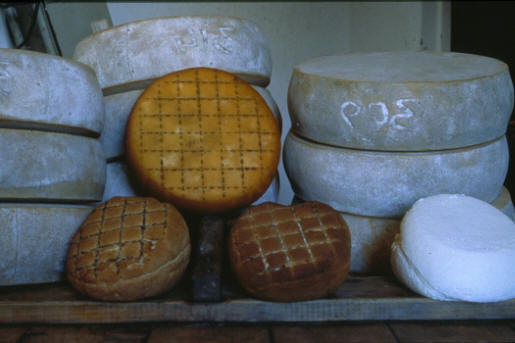
The Malghe Itinerary – wine and food in Friuli Venezia Giulia
In the fascinating mountain landscapes of Carnia, amid the lowing of the herds of cows, whistles of the marmots, and cries of the birds of prey, you can follow these trails on foot, on horseback, on a mountain bike, and even be carried uphill on a tractor. Simple, local foods are offered on dairy farms, and you can buy butter and cheese. Watching how these products are made, you can spend a day in the open air, discovering the rhythms and rites of the ancient trade of the mountain dairy farmer. In some cases, it is also possible to sleep in these farms.
Be sure to check out part two of this article about the land of flavors.
Agenzia Turismo Friuli Venezia Giulia


